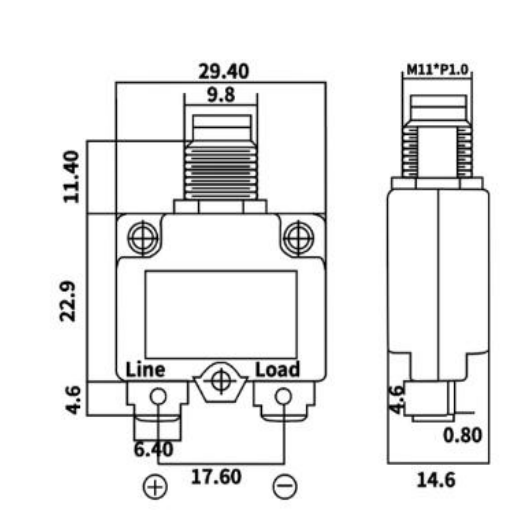How to Use Rubber Splicing Tape A Comprehensive Guide
Rubber splicing tape is a versatile and powerful tool used in electrical and mechanical applications to insulate, protect, and repair a variety of materials. This type of tape is known for its exceptional adhesion properties, flexibility, and durability, making it an ideal choice for splicing wires or cables. In this guide, we will explore how to effectively use rubber splicing tape, highlighting its applications, benefits, and best practices.
Understanding Rubber Splicing Tape
Rubber splicing tape is a self-fusing, non-vulcanizing tape composed primarily of a synthetic rubber compound. Unlike traditional adhesive tapes, rubber splicing tape sticks to itself rather than to the surface underneath. This unique characteristic allows it to create a seamless, watertight seal that can withstand harsh environmental conditions. The tape typically comes in various thicknesses and widths, catering to different applications and user preferences.
Applications of Rubber Splicing Tape
Rubber splicing tape is commonly used in a range of applications, including
1. Electrical Insulation It is widely employed in electrical installations to insulate and splice wires, ensuring safe and reliable connections. 2. Cable Repair When cables suffer from wear and tear, rubber splicing tape can be wrapped around the damaged area to restore functionality and protect against moisture and abrasion. 3. Automotive Repairs Mechanics often use rubber splicing tape to insulate wiring systems or wrap components exposed to oil and water. 4. Plumbing Applications Due to its water-resistant properties, rubber splicing tape can seal leaks in pipes temporarily until a more permanent solution is implemented.
Preparing for Application
Before using rubber splicing tape, it is essential to prepare the surface and gather the necessary tools. Here’s how to prepare
1. Clean the Surface Ensure that the area to be wrapped is clean and dry. Remove any dirt, grease, or moisture, as these can hinder adhesion and compromise the effectiveness of the tape.
2. Remove Damaged Insulation If you are applying the tape to a spliced wire, cut away any compromised insulation to expose clean wire for proper insulation.
3. Gather Tools Have scissors or utility knives on hand for cutting the tape to the desired length. It’s also beneficial to wear gloves to keep the tape clean and avoid direct skin contact with the adhesive.
rubber splicing tape how to use

Steps for Using Rubber Splicing Tape
Using rubber splicing tape properly is crucial for achieving the intended results. Follow these steps for effective application
1. Start Wrapping Begin by anchoring the end of the tape at one end of the area to be repaired. Press it firmly against the surface to ensure it adheres well.
2. Stretch the Tape As you wind the tape around the wire or object, pull it taut but not excessively. Stretching the tape improves its adhesion and creates a better seal.
3. Overlap Layers Ensure that each layer overlaps at least half of the previous one. This overlapping technique maximizes the insulating properties and prevents water entrance.
4. Finish the Application Once you have covered the desired area, cut the tape with scissors, leaving a small overhang. Press the end of the tape firmly against the surface to seal it.
5. Check the Seal After application, inspect the wrapped area for any gaps or weak spots. If you find any, apply additional tape layers as needed.
Tips for Optimal Use
- Temperature Rubber splicing tape adheres best at room temperature. Avoid using it in extremely cold or hot conditions, as this can affect its performance. - Storage Store unused tape in a cool, dry place away from direct sunlight to prolong its lifespan. - Disposal Once you’ve finished your project, dispose of any leftover tape responsibly, considering local regulations regarding disposal of adhesive materials.
Conclusion
Rubber splicing tape is an invaluable tool for a myriad of applications, from electrical repairs to automotive fixes. By following the steps outlined in this guide, you can ensure a secure, watertight seal that not only protects but also prolongs the life of your materials. With careful preparation and application, you'll be able to utilize this versatile tape effectively, making it a reliable ally in your repair arsenal.
-
XIANGFAN Rubber Tape-Ultimate Solutions for All Your Insulation NeedsNewsJun.24,2025
-
XIANGFAN Rubber Tape-Protection for Industrial and Residential ApplicationsNewsJun.24,2025
-
XIANGFAN Rubber Tape: Superior Safety and Sealing for Demanding EnvironmentsNewsJun.24,2025
-
XIANGFAN Rubber Tape: Reliable Solutions for Every Electrical ChallengeNewsJun.24,2025
-
XIANGFAN Electrical & Industrial Tape: Powering Reliability Across IndustriesNewsJun.24,2025
-
XIANGFAN Electrical & Industrial Tape: Excellence in Every ApplicationNewsJun.24,2025
